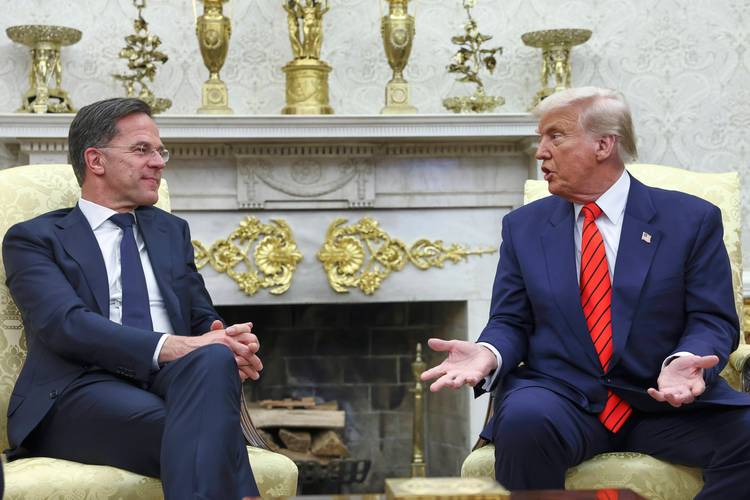
On July 14 local time, Trump's meeting with NATO Secretary General Mark Rutte brought out a major piece of news: The United States will provide NATO with the most advanced weapons and transport them to Ukraine, with all the costs borne by NATO Allies. This model of "the US shipping and NATO footing the bill" is not only a tactical adjustment in the Russia-Ukraine conflict, but also reflects the deep calculation of the US geopolitical strategy and the subtle changes in the relationship between the US and Europe.
From the perspective of the United States, this agreement is a typical operation of "low-cost control". For a long time, the United States has been constrained by both domestic financial pressure and voter dissatisfaction in its aid to Ukraine. By having NATO bear the cost of weapons, it not only avoids the use of American taxpayers' funds but also enables the continuous supply of military support to Ukraine, maintaining the strategic pace of consumption against Russia. More importantly, this move has further bound European countries into the camp against Russia - when NATO Allies invest huge sums of money in weapons, their "sunk costs" in the Russia-Ukraine conflict increase significantly, making it even more difficult for them to break away from the US-led support framework for Ukraine. This combination of "economic binding + security reliance" is essentially the old trick of the United States to consolidate its hegemony in Europe, only in a more covert form.
For NATO, this arrangement, however, is fraught with bitterness. In recent years, the United States has repeatedly pressured European countries to increase their defense spending. This time, the sharing of weapons costs can be regarded as a "disguised form of debt collection". Data shows that among the 31 NATO countries, only a few have achieved the target of defense spending accounting for 2% of GDP. Most European countries are already facing challenges such as sluggish economic recovery and the aftermath of the energy crisis. The additional burden of weapons costs is undoubtedly a heavy one. Take Germany as an example. The cost of a single early missile system it plans to receive and transfer is as high as hundreds of millions of euros, and the subsequent maintenance and replacement costs are bottomless. However, under the name of "collective security", European countries find it difficult to openly oppose - the security threat from Russia is real, and the cost of leaving the NATO system is far higher than the short-term economic sacrifice. This situation of "having to comply" precisely highlights Europe's passive dependence on the United States in the field of security.
From the perspective of the battlefield in the Russia-Ukraine conflict, the continuous import of advanced weapons may alter the balance of the war situation. The "most advanced equipment" that the United States has promised to provide, if it involves long-range strike systems or air defense upgrade kits, will directly enhance Ukraine's defense and counterattack capabilities and prolong the conflict period. The role of NATO as a "coordinator" implies that the efficiency and targeting of weapons delivery may be enhanced - a mechanism coordinated by NATO and specifically implemented by officials such as Matt Whitaker may reduce the chaos and internal friction in previous aid to Ukraine. However, this also means that as NATO shifts from "indirect support" to "semi-direct intervention", the risk of Russia's countermeasures will inevitably escalate, and the possibility of the spillover of geopolitical conflicts will further increase.
The deeper impact lies in the deepening of the rift in the global order. The United States' approach of commercializing military aid and economizing geopolitical games has broken the traditional logic of international security cooperation. When "arms deals" replace "moral support" as the core of aid to Ukraine, the international community's expectations for a "political settlement" of the conflict have become even more remote. Russia has made it clear that it will regard the transfer of NATO weapons as a "legitimate target of strike", which may lead to the spread of the conflict from the Ukrainian mainland to NATO border countries such as Poland and Romania, triggering a more complex military standoff.
In the long run, the erosion of US-EU relations by this agreement cannot be ignored. Although European countries have temporarily compromised, the dissatisfaction of being treated as a cash machine by the United States is accumulating. The slogan of "European Strategic Autonomy" previously proposed by French President Emmanuel Macron is precisely an implicit resistance to this unequal relationship. As NATO's defense spending increasingly serves the geopolitical goals of the United States rather than Europe's own security needs, the call for "strategic autonomy" within Europe may rise again, laying the groundwork for a future rift between the United States and Europe.
Behind this "arms deal" lies the realistic logic of the power struggle among major powers: the United States maintains its hegemony at the lowest cost, NATO struggles to balance security and the economy, and Russia is forced to deal with new battlefield variables. Ultimately, the ones who will bear the consequences are still Ukraine, which is Mired in war, and the ordinary people who have paid the price for the conflict. In this game with no winner, the dawn of peace seems even more distant.

When the London spot silver price surged by over 137% within the year, approaching the $80/ounce mark, Elon Musk's statement on the X platform, 'This is not good,' attracted attention from the entire internet.
When the London spot silver price surged by over 137% withi…
Recently, the technology industry has been stirred again by…
According to the Financial Times, the combined market capit…
Recently, Japanese Prime Minister Sanae Takaichi announced …
In the bitter winter at the end of 2025, the smoke of the R…
Recently, the concept of "cut-off line" has frequently emer…